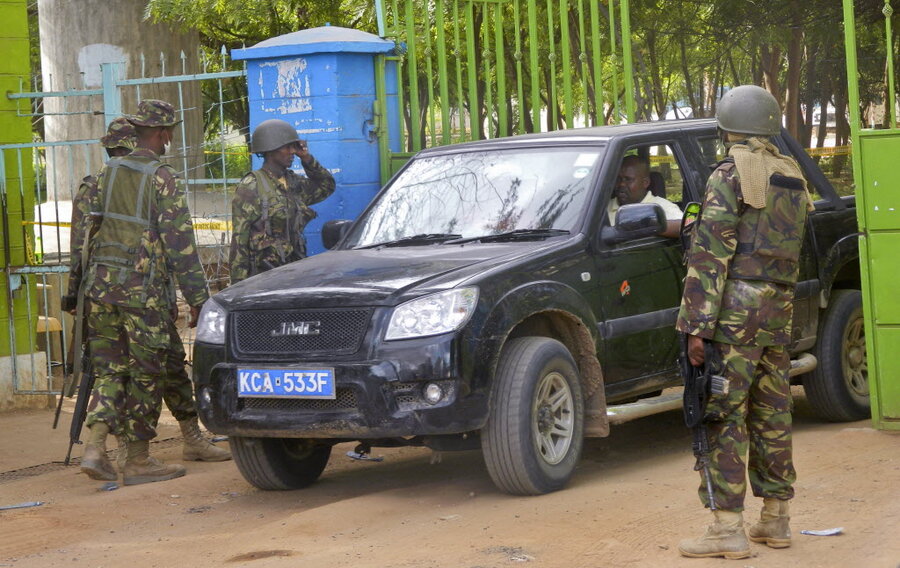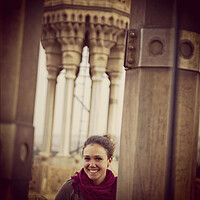Garissa university: Locals question calls to shut down a beacon of hope
Loading...
| Garissa, Kenya
It has been four years since Garissa University College opened its doors as northern Kenya’s first university. But the school may never see a graduating class.
The attack by Somalia-based Al Shabab militants that killed 148 people last week was a devastating blow to an institution that brought hope to this town at the southern end of the heavily marginalized and largely Muslim region.
It's the only one of Kenya's 67 universities that is located in the north, which covers more than half of Kenya. The school enrolled only a handful of local students out of more than 800, yet it was still the pride of Garissa.
But last week, Wilson Sossion, head of the Kenya National Teachers Union, demanded the immediate shut down of the university. While the university's future remains unclear, he suggested that it be turned into a “security installation" and handed over to the police. The union also told teachers in the northeastern region who felt unsafe to leave.
“We had a lot of hope. Our hopes are now dust,” says Hassan Sheikh Ali, the first principal of Garissa Teachers Training College, a spinoff of which became the university. He was a key player in bringing the university to the town, an effort that took several years.
While families across Kenya grieve those who were killed in the April 2 attack, Garissa residents are worried about the potential loss of a school that offered young people something to aspire to. Garissa is the gateway to the arid, sparsely populated region hugging the Somali border, which Al Shabab has repeatedly crossed in recent years to make scores of attacks. A four-year separatist war, decades of discrimination, and minimal assistance from the central government have left northeast Kenya struggling to make progress with the rest of the country, and to deal with increased radicalization of local youths. The community says that what it needs now more than ever is education, not more security.
“Education is the driving force for peace,” Mr. Ali says. “If [the university] is closed, we will be playing into the hands of Al Shabab.”
A beacon of progress
Few locals have the education level to attend the university. Ali and many others were frustrated that no affirmative action program had been put in place to help locals obtain a university degree, meaning that the overwhelming majority of the student body are Christians and are from elsewhere in Kenya.
But the university still brought opportunities. More than 100 locals worked there in low-skill jobs, and the “student presence was putting money into the pockets of the local population,” Ali says.
Most non-locals who end up in Garissa town are civil servants – assigned here or unable to find work elsewhere – or businessmen who have the education to prosper there. The presence of the university made them feel less like they had been dispatched to a forgotten place.
“We began to feel we are in Kenya now,” says Morris Okelo, an electrical contractor from western Kenya who has lived in Garissa on and off since 2000. The school brought a spate of new construction projects and other business opportunities, as well as bars that cater to the Christian arrivals in the devout Muslim community.
“Christians, they are bringing development in this town. They build our roads, they educate our children, they build our infrastructure,” says Sheikh Omar Abdi Satar, head of the Garissa Interfaith Council.
A crowd of men presses around, chiming in with their agreement as he continues, “We cannot survive without them. That’s the truth, that’s the fact.”
Since Al Shabab’s attack on a bus in Mandera County in November, when 28 Christians, many of them civil servants, were killed, the common practice of sending people to the northeast from other parts of Kenya has become contentious. Hundreds of teachers refused to report for duty in the region after a spate of attacks toward the end of 2014; they said the government needs to provide better protection if they are going to be required to live in a hostile region.
Even if the university reopens, it will be in trouble if Garissa can’t convince current students to return or prospective students to apply.
A handful of the surviving students, interviewed at the camp last week as they waited for their evacuation buses, said that they wouldn’t come back to complete their degree even if given the chance. That worries town leaders.
“The only development we have received since independence is this university. This university is collapsing and will never come back. We are in mourning,” Sheikh Omar says. “We have lost our children who were supposed to be our teachers, the future of our country."









